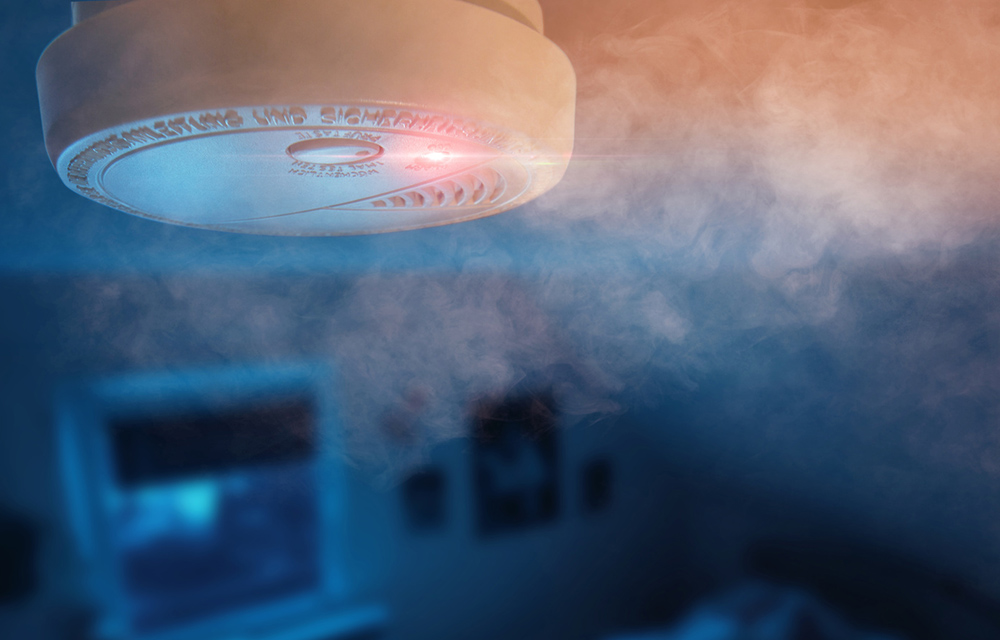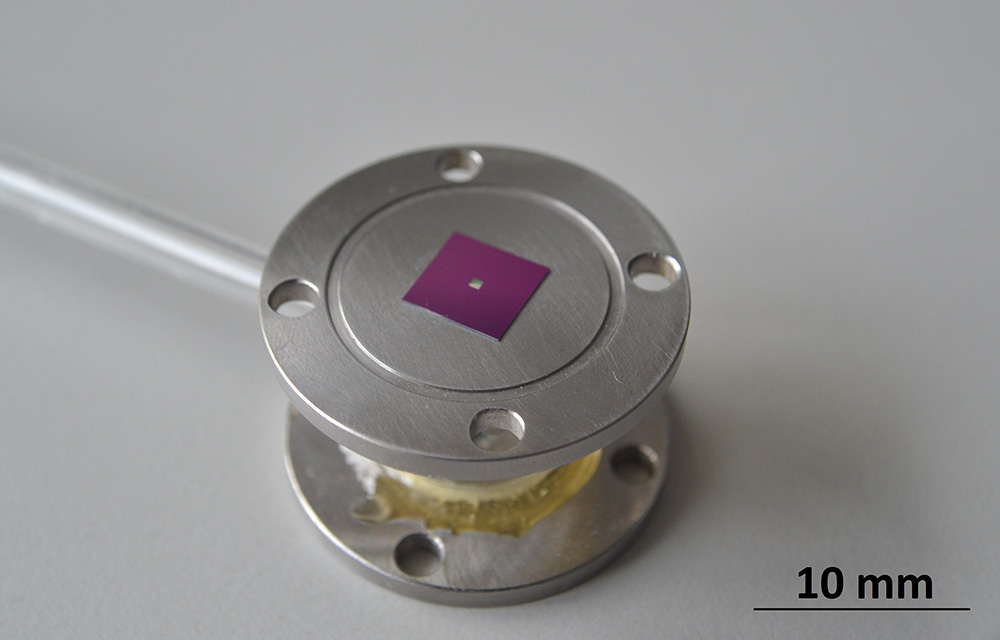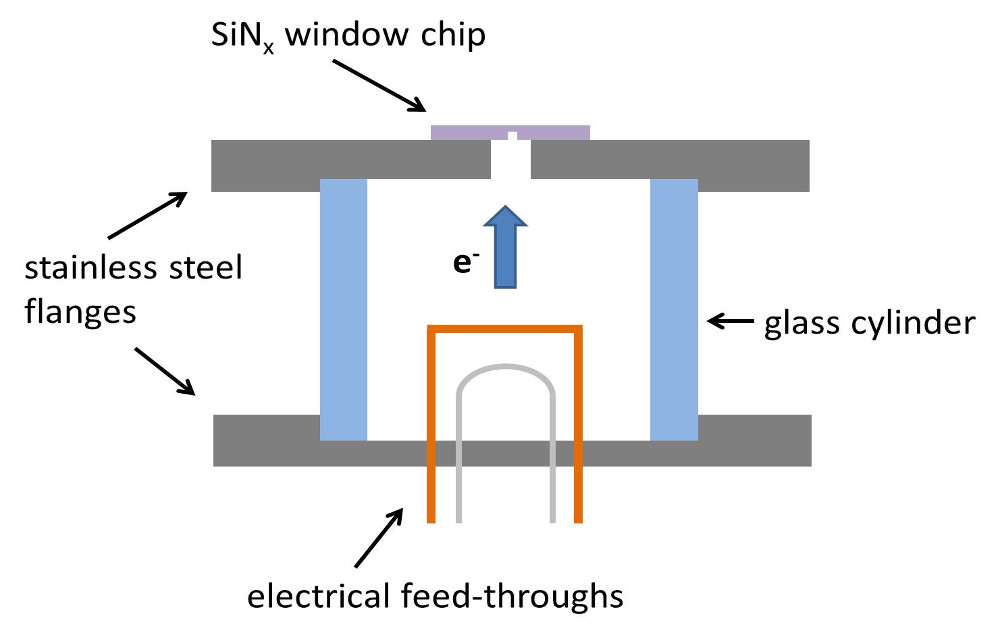Ion mobility spectrometres are applicable in all fields of gas analysis. They are used especially in breath gas analysis and for the detection of explosives. But they are also well-suited for early fire detection, since they are able to detect gases already in the ignition phase.
For a successful analysis, gas molecules have to be ionized. In the past, this was done by radioactive sources. The researchers have now developed an alternative: Instead, they use a micro-electron source for ionizing the molecules. In a vacuum-sealed housing, electrons released by an emitter move through a thin silicon nitride window chip of approx. 300 nanometres to the analyser.
In contrast to radioactive ionization sources, micro-electron sources can be switched off at any time and need not to be disposed as hazardous waste. Their small size makes them also interesting for use in hand-held devices, for example to detect chemical agents.


